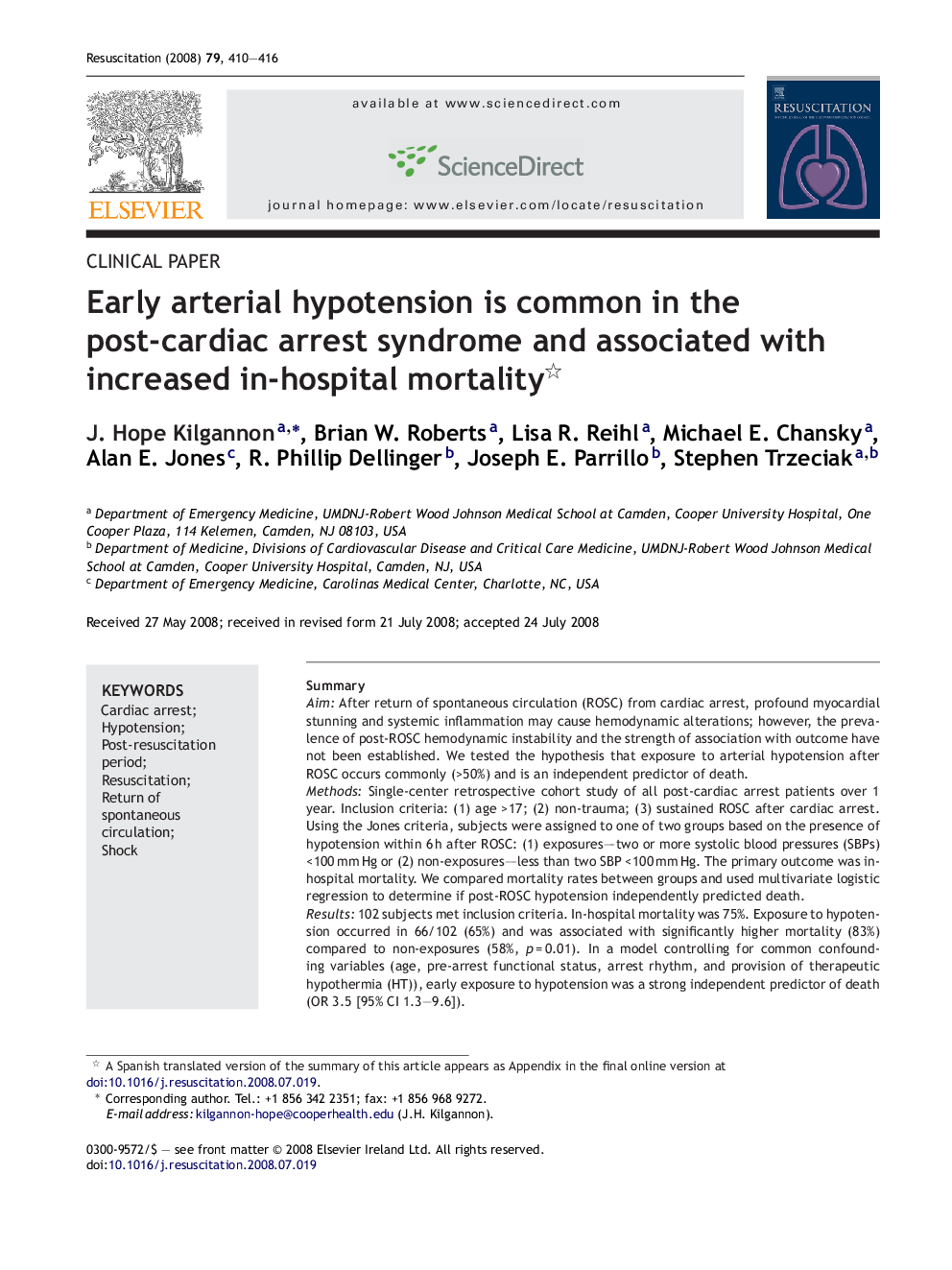| Article ID | Journal | Published Year | Pages | File Type |
|---|---|---|---|---|
| 3010501 | Resuscitation | 2008 | 7 Pages |
SummaryAimAfter return of spontaneous circulation (ROSC) from cardiac arrest, profound myocardial stunning and systemic inflammation may cause hemodynamic alterations; however, the prevalence of post-ROSC hemodynamic instability and the strength of association with outcome have not been established. We tested the hypothesis that exposure to arterial hypotension after ROSC occurs commonly (>50%) and is an independent predictor of death.MethodsSingle-center retrospective cohort study of all post-cardiac arrest patients over 1 year. Inclusion criteria: (1) age >17; (2) non-trauma; (3) sustained ROSC after cardiac arrest. Using the Jones criteria, subjects were assigned to one of two groups based on the presence of hypotension within 6 h after ROSC: (1) exposures—two or more systolic blood pressures (SBPs) <100 mm Hg or (2) non-exposures—less than two SBP <100 mm Hg. The primary outcome was in-hospital mortality. We compared mortality rates between groups and used multivariate logistic regression to determine if post-ROSC hypotension independently predicted death.Results102 subjects met inclusion criteria. In-hospital mortality was 75%. Exposure to hypotension occurred in 66/102 (65%) and was associated with significantly higher mortality (83%) compared to non-exposures (58%, p = 0.01). In a model controlling for common confounding variables (age, pre-arrest functional status, arrest rhythm, and provision of therapeutic hypothermia (HT)), early exposure to hypotension was a strong independent predictor of death (OR 3.5 [95% CI 1.3–9.6]).ConclusionsEarly exposure to arterial hypotension after ROSC was common and an independent predictor of death. These data suggest that post-ROSC hypotension could potentially represent a therapeutic target in post-cardiac arrest care.
